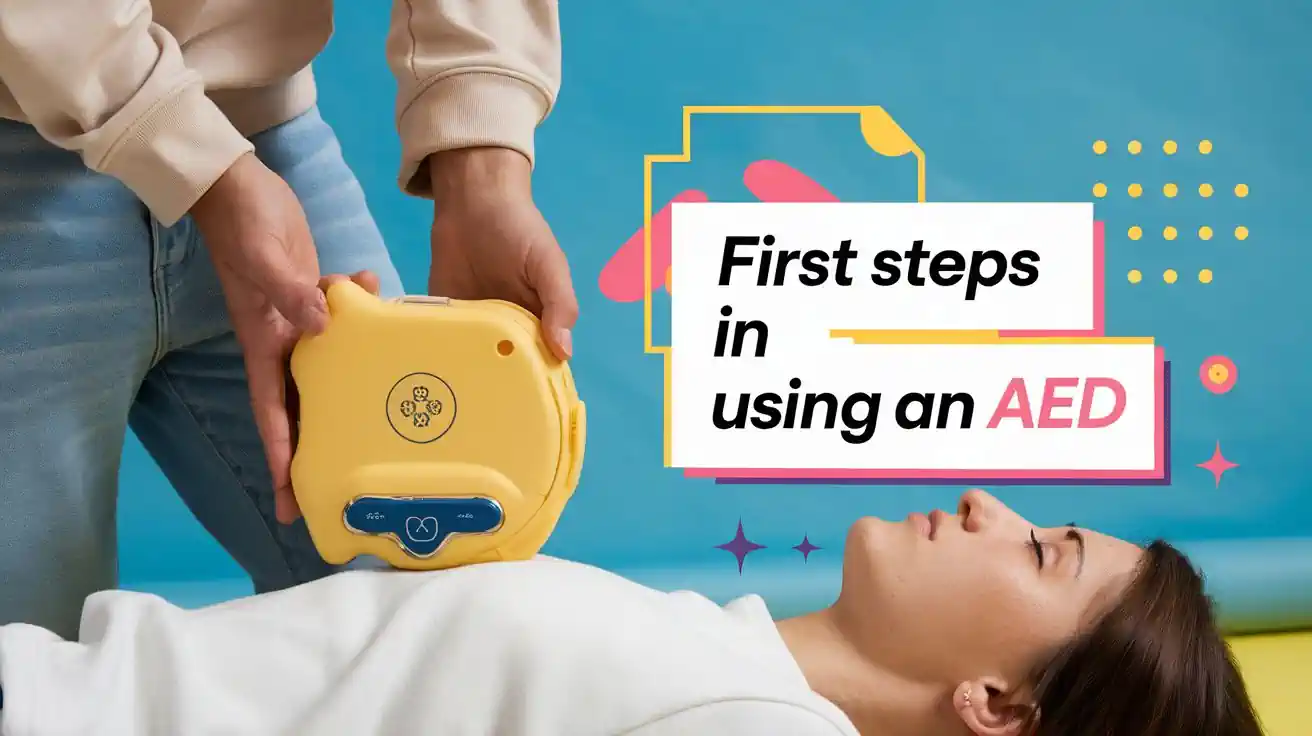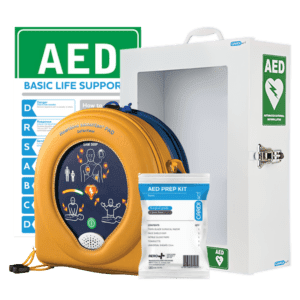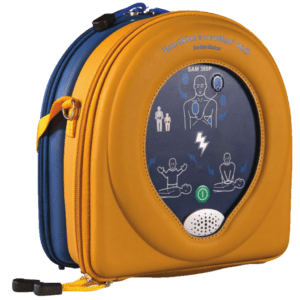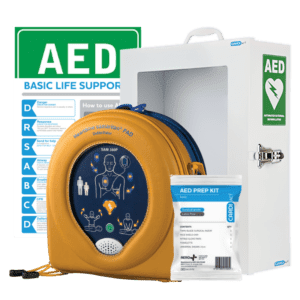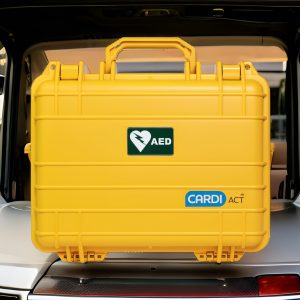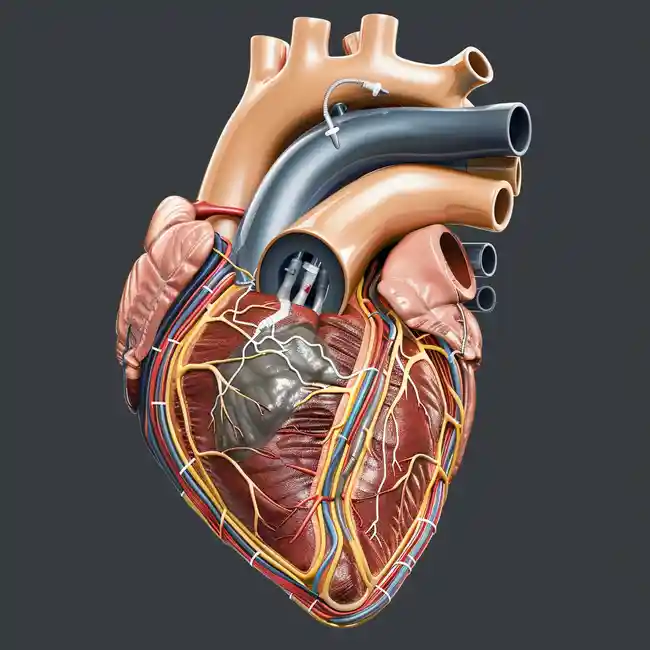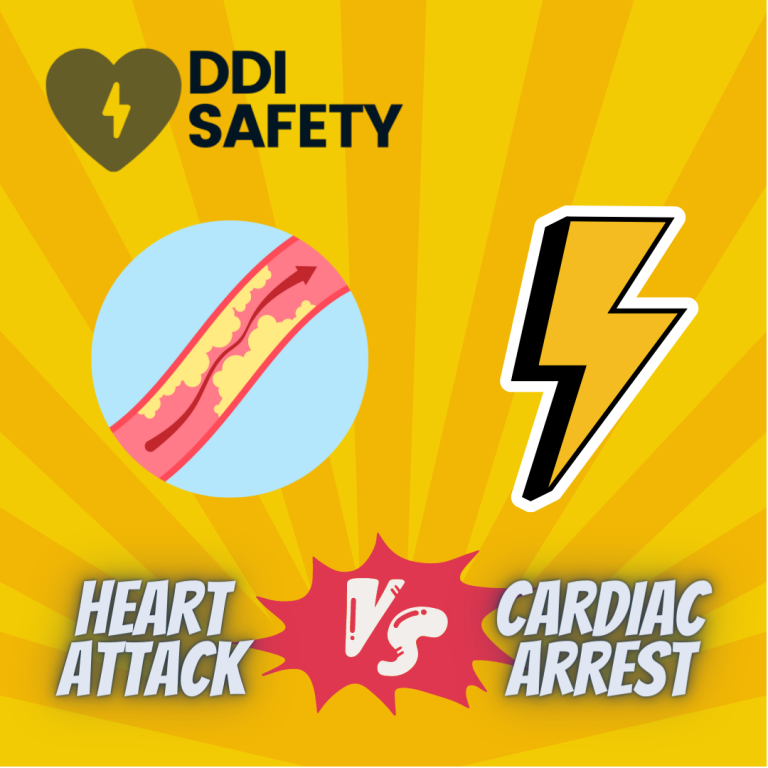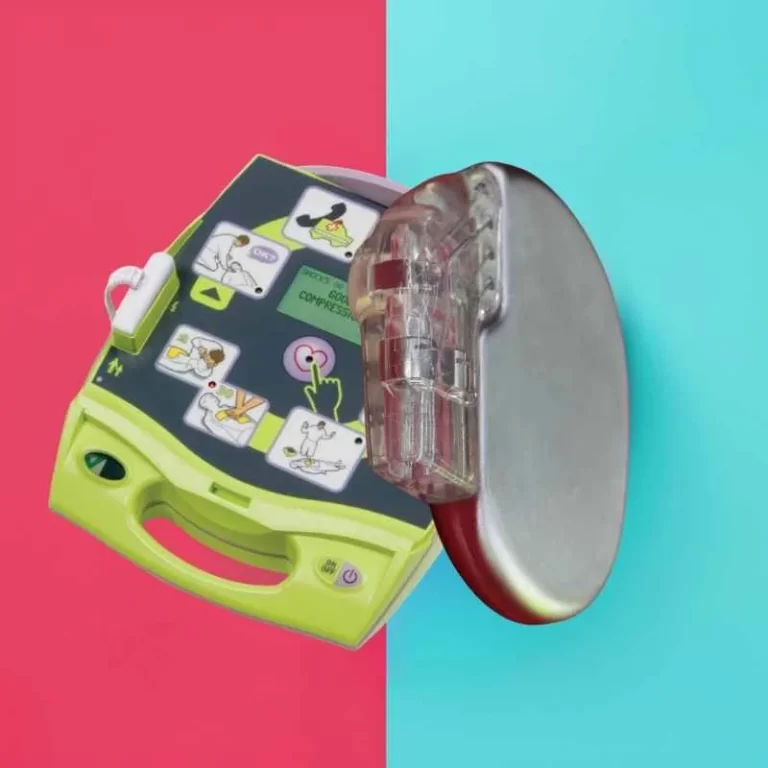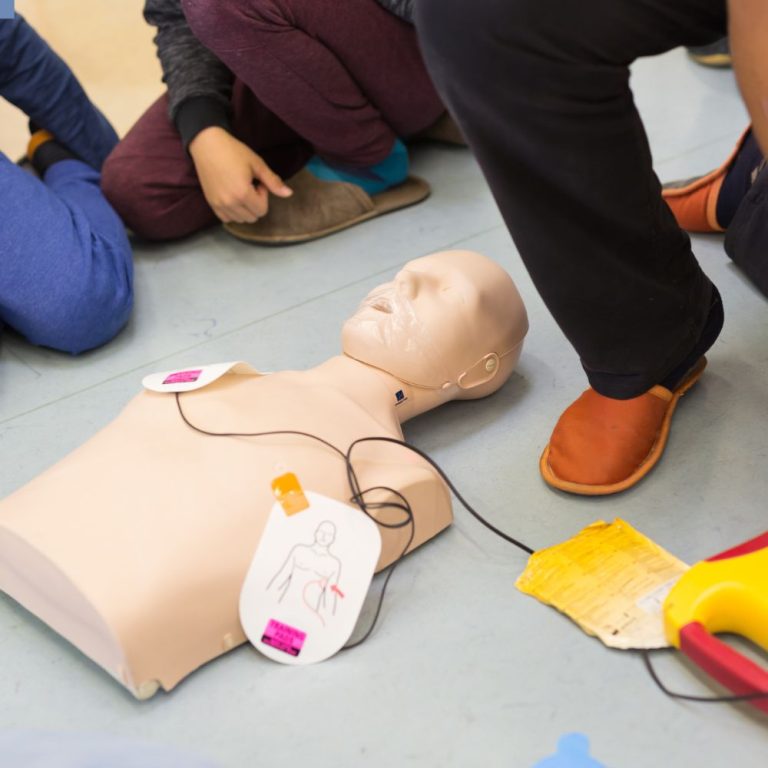First Steps with an AED: Your Questions, Answered
There’s a lot of confusion around the “first steps” with an AED, and we get it—it’s a high-stakes situation! At DDI Safety, we’re here to simplify it. This guide answers common questions like when to use an AED, whether to turn it on or attach the pads first, and what happens after the pads are in place.
Let’s tackle these questions head-on so you’re ready to act confidently when it counts.
Common Questions About AED Use
- How many rounds of CPR should you perform before using an AED?
- Should you turn on the AED first or attach the pads first?
- What happens immediately after attaching AED pads?
Now that we’ve got our list, let’s dive into the answers.
1. How Many Rounds of CPR Before Using an AED?
Here’s the deal: you don’t wait. The moment an AED is available, stop CPR (briefly!) and set it up.
Why? Because an AED’s job is to analyze the heart and deliver a life-saving shock as quickly as possible. There’s no need to wait for a specific number of CPR cycles—just get that AED going ASAP.
👉 The Process:
- Start CPR immediately while someone grabs the AED.
- When the AED arrives, pause CPR to set it up.
- Let the AED analyze and follow its prompts (it’ll tell you exactly what to do).
💡 Good to Know: If a shock is delivered, you’ll resume CPR right after. If no shock is needed, the AED will guide you to keep compressions going.
2. Do You Turn on the AED First or Attach Pads First?
Always turn the AED on first.
The moment you press the power button, the device takes over with verbal instructions that walk you through the process step by step. It’s like having a calm, friend in the middle of the chaos.
👉 Why This Matters:
Turning it on first ensures the AED can guide you on what to do next—like where to place the pads and when to step away. This keeps things smooth and stress-free.
3. What Happens After Attaching the AED Pads?
Once the pads are in place, the AED will jump into action. It starts by analyzing the patient’s heart rhythm to decide if a shock is needed.
Here’s where you step back. Literally. Stand clear of the patient, and make sure no one else is touching them.
- If a shock is advised: The AED will prompt you to deliver the shock or deliver it automatically, depending on the model.
- If no shock is advised: The AED will instruct you to resume CPR immediately.
👉 Quick Recap:
After attaching the pads, trust the AED. It’ll guide you every step of the way.
Why DDI Safety Recommends Owning an AED
Here at DDI Safety, we’re big believers in being prepared for the unexpected. Owning an AED means you’re ready to act quickly in a cardiac emergency—and that can save lives.
Research shows that using an AED within the first few minutes of cardiac arrest significantly improves survival rates. That’s why having an AED in your home, workplace, or community is a smart move.
Final Thoughts
The “first steps” with an AED don’t have to feel overwhelming. Turn it on, follow the instructions, and trust the device to guide you. Combine this with effective CPR, and you’ve got the ultimate life-saving combo.
Ready to invest in an AED? DDI Safety has you covered. Explore our range of high-quality AEDs and get expert advice on choosing the right one for your needs
Best selling products
Heartsine 500p Defibrillator Bundle
Price range: $2,025.00 through $2,779.00Heartsine Samaritan PAD 360P Automatic AED
$1,489.00Heartsine PAD360P Automatic AED Mega Bundle
Price range: $1,565.00 through $2,394.00Cardiac AED Tough Case – Built for Farms, Ready for Utes
$192.50 including GST

